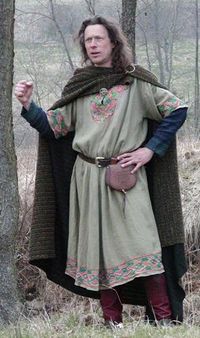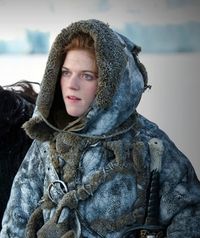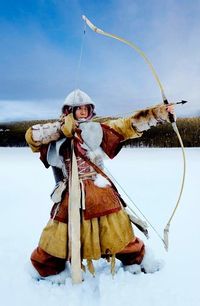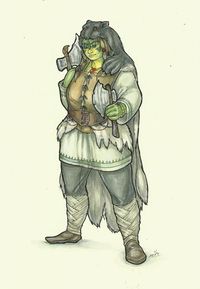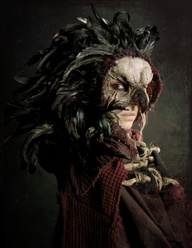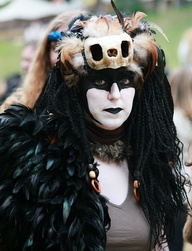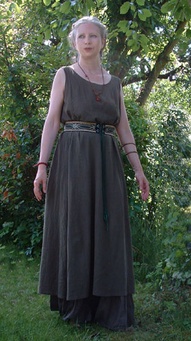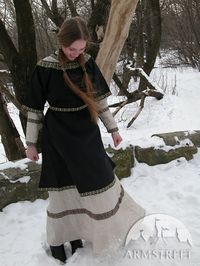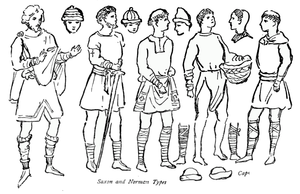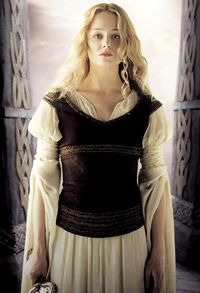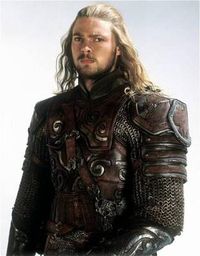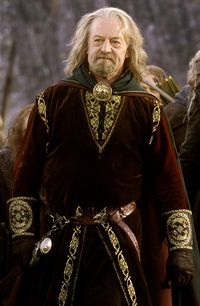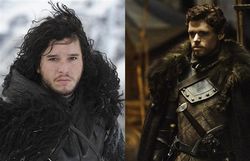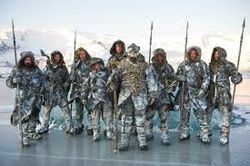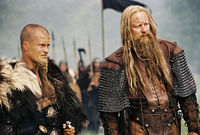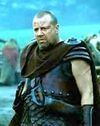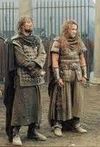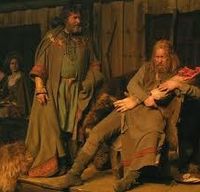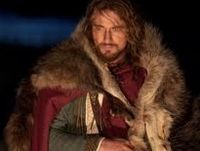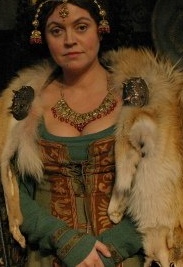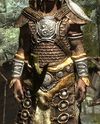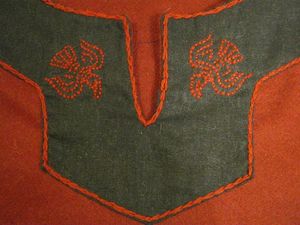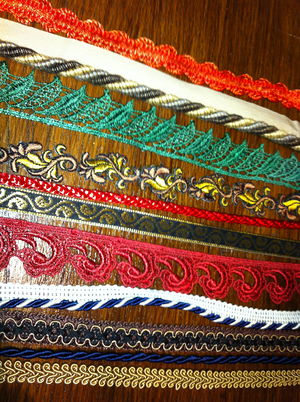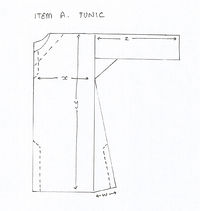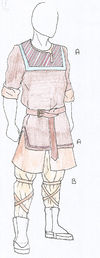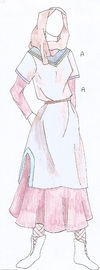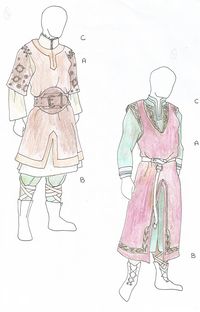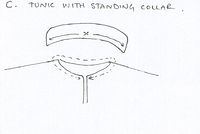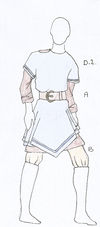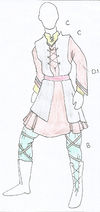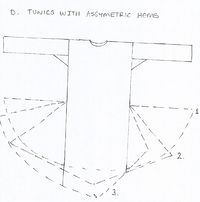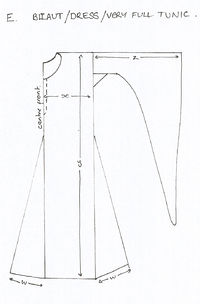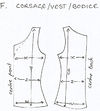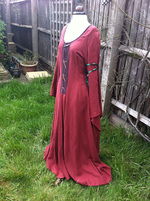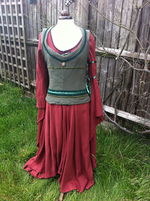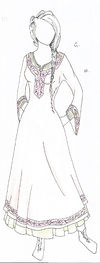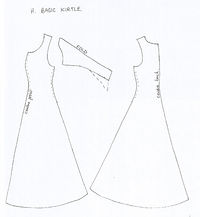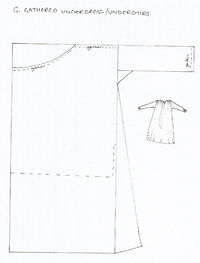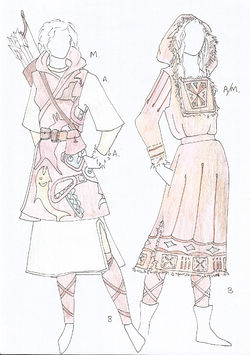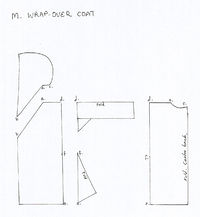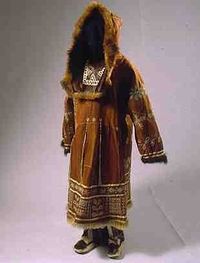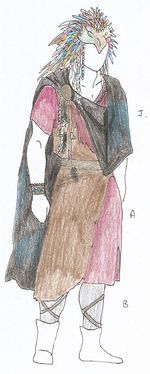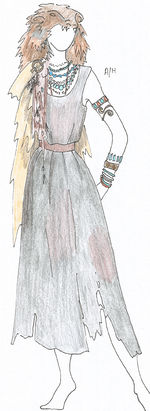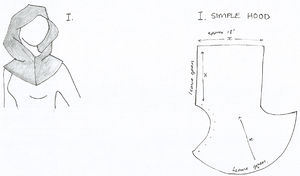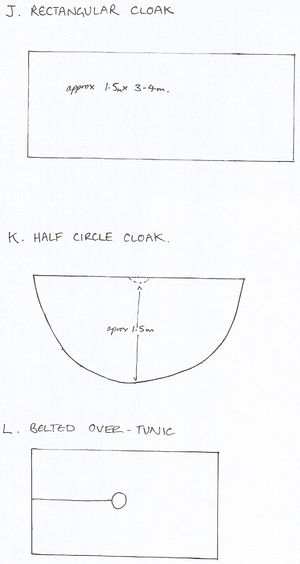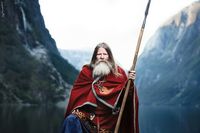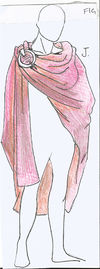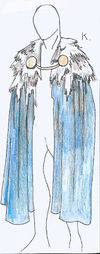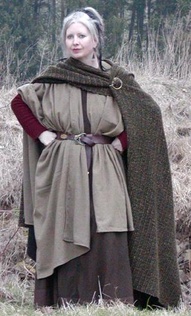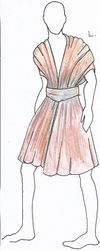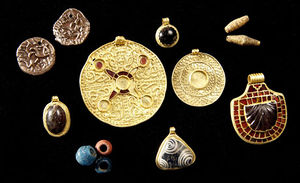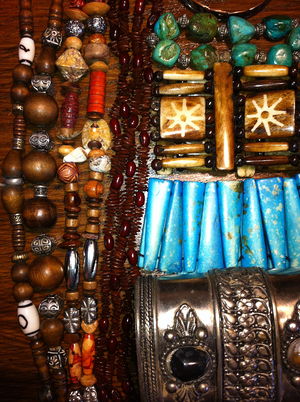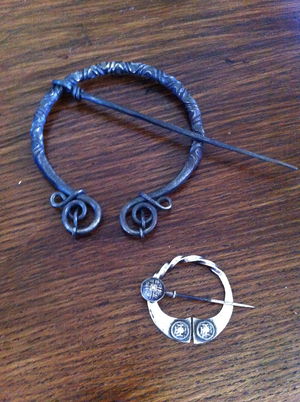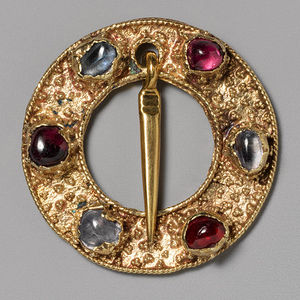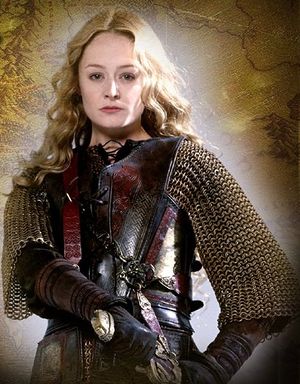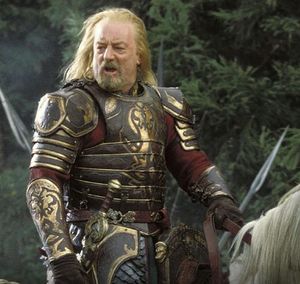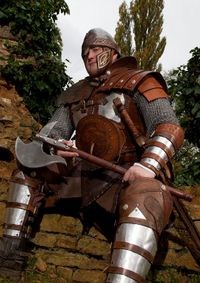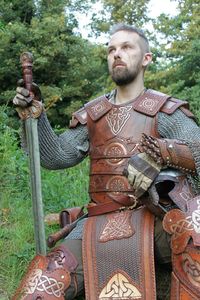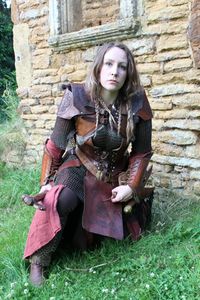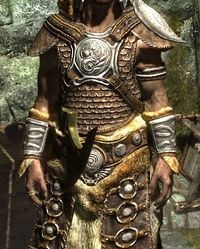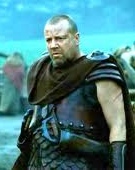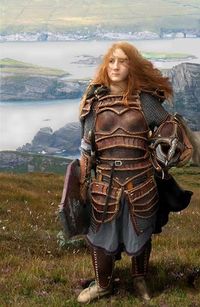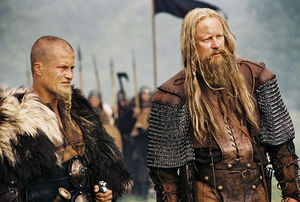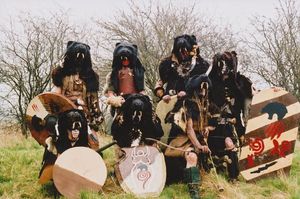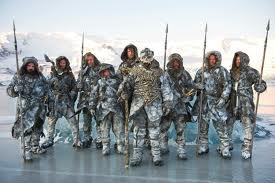Wintermark costumes
| Line 250: | Line 250: | ||
===Online Shops=== | ===Online Shops=== | ||
* [http://www.facebook.com/pages/Angrave-Designs/368641524223 Angrave Designs] produces custom orders (including embroidered borders). | * [http://www.facebook.com/pages/Angrave-Designs/368641524223 Angrave Designs] produces custom orders (including embroidered borders). | ||
* [http://www.jorgencraft.com Jorgencraft] make beautiful viking costume. | |||
* [https://www.facebook.com/themidgardseamstress The Midgard Seamstress] Custom made UK LARP and Re-enactment costumes | * [https://www.facebook.com/themidgardseamstress The Midgard Seamstress] Custom made UK LARP and Re-enactment costumes | ||
* [http://www.dein-larp-shop.de/de/ Dein LARP Store] has a large range of appropriate dresses, trousers and tunics. Note their page has a translate button and they ship to UK. | * [http://www.dein-larp-shop.de/de/ Dein LARP Store] has a large range of appropriate dresses, trousers and tunics. Note their page has a translate button and they ship to UK. | ||
Revision as of 09:56, 26 September 2012
Note: The tone and style of this page may need editing. All costume advice pages should be written in third person voice, using verbs that make clear that this page is advice, not direction.
Look and feel
Women and men, young and old are always ready to protect their home, family and the empire. Costume should reflect this. Wealthy men may display their fortune in richer fabrics, decorative borders, beautiful armour and longer tunics but these things will not grant them respect. Similarly women may wear longer fuller skirts or tight fitting kirtles but they should always be able to kill two orcs before breakfast whilst wearing them.
"they are perfectionists who value quality over mass production" - a group of Winterfolk are very unlikely to have a uniform or matching clothes.
"Wintermark art tends to be intricate and detailed" - add borders and trim to your tunics. This can be added to in between events to spread costs. Embroidery and beading may also be appropriate. Another idea might be to create or buy tooled leather 'patches' that you could add to plainer leather armour to build on its individuality and intricacy. If you are feeling arty, persuade a leather crafter to show you how to carve runes into your armour.
"the most common clothing for the Wintermark is a thigh length tunic over trousers" - all of the Winterfolk wear a version of this. Try several layers with varying sleeve and hem lengths. Women will wear the same as this or with a longer fuller tunic/dress. Wealthier women may also wear a kirtle or very simple form of the bliaut and corsage (see specifics section). More details on this are given later. Trousers are slim but not fitted, and normally wrapped with strips of cloth from ankle to knee. The differences between the three subcultures will be expressed in the way you adorn the basic costume. more details follow.
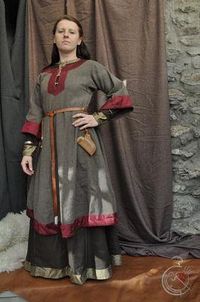
Suaq
Over their tunics the Suaq wear a hooded coat. In the cold north this would be made of thick animal pelts, fur side in. In warmer climates perhaps leather and in the imperial heartland in summer they may choose to wear linen or canvas versions. Base coat colors tend to be pale to blend with the icy landscape. Although they may keep them plain for hunting and scouting, at home most choose to paint or embroider their coats with bright sigils - symbols of animals and enemies the warrior has killed. Icewalkers tend to adorn their coats with fetishes in a similar way to Kallavesi mystics.
Kallavesi
The clothing of the Kallavesi tends to be a little more primitive and this is where some iron-age styles may be more appropriate. Clothes are a little rougher, unlikely to be tailored and colors will be more drab with occasional flashes of color. Instead of decorative borders they adorn their clothes with fetishes and feathers, beads and bones. Headdresses are central to their identity as an individual and as a member of the Kallavesi and a symbol of their wisdom, power or responsibility. These are usually animal headdresses- either figuratively or literally as they believe it helps them draw on the animal's strengths. Mystics usually chose animals associated with wisdom or guile while warriors favour strong animals like bears, boars and stags.
Steinr
Steinr clothing is most similar to the central look. They will have multiple layers of tunics and more decorative borders. Although their clothing may be simple, a wealthy Wintermarker may have clothing as exquisitely crafted as a lord of Dawn. Their wealth is most likely to be displayed in the details: the embroidery and expensive decorative borders, the multiple layers and beautiful jewellery.
Similar nations
The Wintermark shares close trade connections with their neighbours in the Marches; with grain and wealth comes influences on fashion. Among those with the money to spend on decorative clothes more tailored fashions are seen, with women in kirtles laced closer at the waist and hips and longer hem lines.
The Wintermark's and Varushka's ancient origins can be seen in their similarities of costume. Both nations most commonly wrap their trousers to the knee although Varushkan baggy trousers are seen as rather flamboyant by Wintermarkers. Tunics of varying length and decoration are the staple of both nations. In the Wintermark these are normally pulled on over the head but Varushkan styles are commonly open at the front and asymmetrical or diagonal-cut. The Wintermark do not share Varushka's love of mixing bright primary colors. Hats are common in Varushka but Winterfolk favour hoods. Men and women of the Wintermark are frugal and practical and are more likely to wear leather or fur layers or other materials that are hard-wearing and sensible for their harsh climate.
Practicality in clothes and armour is something the Winterfolk share with the Navarr. Their well used leather armour is often similar. Kallavesi mystics may also be occasionally mistaken for a Navarr blood mage, however the latter do not wear animal headresses and do not believe in invoking animal spirits
Research
Historical inspiration
Saxon is the main historical influence but most things from the Roman exit through to mid 13th century should be suitable as change is minor during this time. In general, viking reenactment costume should be fine with a few exceptions: Try to avoid anything iconic of Vikings alone as this is not a key look for the Nation and the Winterfolk are neither seafarers nor raiders. Thor's hammer is a well recognized religious symbol that does not exist in Empire and should not be used. 'Viking' hero pants are more suited to Varushka. Iron age costume may also be appropriate - particularly for the Kallavesi. The checked patterns of a simple plaid can look good but be careful not to stray into the realms of tartan, which is not acceptable. Kilts in any form did not exist in our own history until the Jacobean era, and should not be worn.
Although there are strong historical influences for this nation it is important to remember that this is a fantasy setting. The best costumes will take Saxon as a starting point and add an individual fantasy feel. Don't be restricted by what is historically accurate.
Lord of the Rings Rohirrim
The armour of Rohan is perfect for the Steinr. Leather armour, sometimes with metal plate, is layered over chain and occasionally scale. Gimli's armour follows similar lines and is also appropriate. Theoden's clothes are a perfect example of a wealthy Wintermarker. Use caution when copying Eowen's dresses as some of these are more typical of other nations. The white dress with corsage (tight vest laced at the back) is a great example of a wealthy woman's dress. However, the scoop-neck velvet green gown belongs in Dawn, the side-less surcoat perhaps in the Marches and her funeral gown might be worn in Highguard.
Game of Thrones
The snow-coats of the wildlings are great for Suaq hunters (But wearing human skulls might be considered too 'barbaric' even for the Winterfolk). Inspiration for the feel of the Wintermark can be taken from the Night's Watch and Starks.
King Arthur 2004
Inspiration can be taken from the Saxons in this film. In general the Picts less suitable. Bors leather armour looks great and if layered over chain might be perfect. Tristan and Gawain's armour has the right feel but plate mail and brigandines are not central to the look.
Beowulf and Grendel 2005
Beautiful clothing. Great examples of the effectiveness of layering costume.
Jade warrior
Set in iron age China, Jade Warrior (2006), has inspiration for the snow coats and hoods of the Suaq.
Skyrim
Skyrim successfully mixes fantasy with Norse inspiration. In particular the Norse layered leather armour would look excellent for the Wintermark. The leather corsets worn by many of the women are not sufficient as armour and horned helmets should not be worn.
In detail
Layers, layers, layers. The best way to make a great costume is by using multiple layers each revealing the one below.
As mentioned previously the edge trim on tunics will mark you out as a Wintermarker, particularly the Steinr. Try or buy tunics with a contrasting color at the neck/hem/cuff then think about adding trim or embroidery.
The above images are from The Midgard Seamstress http://www.facebook.com/themidgardseamstress
The above trims although not specific or necessarily perfect can all be bought from shops or markets at low cost.
For the low-fantasy and early-period Wintermark, the best fabrics are natural ones or good imitations. Heavy cottons, linens and wool will be best for most characters with maybe some velvet and raw silk for the very richest. Avoid shiny satins or crushed velvet/velour. Twills and simple checked plaids will look good but careful not to stray into the realm of tartan.
All colours are suitable but muted or natural hues are likely to look best.
Try not to use visible buttons. Toggles or lacing will look much better and try closing neck openings with brooches as this look good and save on fiddly eyelets if you are making your own costume.
Most costumes will look better if tied in with a decent leather belt and accessories such as pouches and jewellery.
Specifics
It can be hard to find well priced costumes and appropriate Dark Ages patterns can be hard to come by. The good news is that almost all the Wintermark costumes can be made with very simple flat-patterns with straight-edged shapes. Most people with even very basic skills will be able to make or supplement their kit. Below are basic (not to scale) patterns with each of the following costume suggestions. You need to work out the appropriate dimensions for you and dont forget to add 2-3 cm at the edges for seams.
This is the very basic Wintermark kit comprising a tunic and trousers bound to the knee. The tunic is easy to make and a run through is given in the tutorial below. The trouser pattern is useful because the gathers around the crotch are comfy and make tearing the seams very difficult.
Another simple trouser pattern and tutorial can be found at: http://www.vikingsonline.org.uk/resources/authenticity/basickit/basickit5.html
The following costume suggestions are mostly based on variations of the tunic with a couple more simple ideas thrown in. Full instructions will eventually be added for each pattern.
Here is a tutorial to make a basic tunic: How To - Make a T - Tunic. Or alternative instructions here : http://www.virtue.to/articles/tunic_worksheet.html or http://www.angelfire.com/ia2/barony/newmembersguide/sewingtipstxt.html
Wintermark man and woman
All of these are formed from two layered tunics. Lengthen dimension Y for longer length in the body and dimension Z can be altered for short or long sleeves. Tunics can have either front or side splits or none at all. Use wider gores (triangles at the sides from waist to hem) to create fuller skirts.The neckline shown here for the man is an off-centre split and there is a 'bib' of contrasting material and trim. The pattern for the hood is in the next section.
Wintermark male variations - utility and high status
Here the under-tunics have a short standing collar at the neck line, very similar to early medieval shirts. Sleeves can be attached separately. This is particularly useful if you make a tunic layer out of leather as it avoids bulky seams. Thick fabrics/leather can have added metal studs or rings and be worn as armour. For a higher status male character make tunics longer and more ornate.
Asymmetric hems
If you are feeling confident you can also add detail and individuality by playing with hemlines. this simple pattern creates pleats at the side and shows how to change the basic hem shape. Of course sleeve length can be varied and neck fastenings changed too.
Wealthy woman's bliaut-style tunic dress
The full sleeved tunic dress is still very simple but has added gores at the front and back as well as the sides for a very full skirt. Keep the arms straight, slightly belled or very full as shown here.
A corsage can be worn over the top. This streamlines the silhouette and can help hold in bellies in the place of a corset. Fit dimension X to bust measurement (divide by 4 but dont forget to allow 2-3cm for seams) dimension z to waist and dimension w to hips. Dimension y is from top of shoulder to hip-line. This can be lightly boned if preferred and is best made of a more heavy duty fabric. Ornament it as required and lace up the back to close. The easiest way to do the edges is with bias binding. Hopefully a tutorial will be uploaded soon.
Wealthy woman's kirtle
The kirtle is more complex as it is a fitted item but patterns are easily available from reenactment sites or main stream suppliers like Buttrick. The gathered under-tunic can be worn by men and women and I have included it here because it is a really great way of staying warm as the pleats trap air against your skin. The more fabric you use the warmer the result.
Suaq coats
Wrap over Coat
This is a very simple wrap-over coat design similar to a dressing gown. You can use a gusset at the side for it to flare from the hips.
Hooded tunic coat
Use tunic A with the hood from pattern M.
Kallavesi looks
This is harder to define and will involve more fantasy elements. The two drawings use only the flat pattern A tunics and might be easier to make for beginners as edges could be left unhemmed.
Hats and outerwear
The main outwear for the Wintermark is a cloak. Try rectangular and semicircle cloaks in heavy fabrics. These can be fur edged or lined and decorative borders are ideal. Try to avoid full circle, or gathered at the neck or per-attached hood styles as they are evocative of later in history. Pull them up over your head, or wear a separate hood to keep the rain off. Hats or caps although 'not wrong' are more Varushkan as are coats (except Suaq coats).
I. This is a very simple hood pattern, simply cut two, and would be very easy to hand stitch if necessary.
J. Rectangular cloak - couldn't be easier
K. Semicircular cloak - can be plain or richly adorned
L. Gathered over-tunic. Simple and look good with un-hemmed edges for a rough Kallavesi look.
Jewellery
A google search for Saxon jewellery will mostly display historical items of gold with semiprecious stones.
Simple jewellery can be easily made or bought in most markets. Bone (resin), seeds, glass, wooden, shell, ceramic or metal beads can be purchased from most sewing or craft shops and cheap arm bands can be found online or from most lrp traders.
Torcs and ring brooches are particularly iconic of the Dark Ages and make a great investment.
When buying more expensive metal jewellery keep it bold and chunky avoiding fine chains or delicate pendants. As always avoid OOC religious icons.
Armour
Steinr
The basic look is leather over chain but the rest is up to your imagination. Although some Steinr may have rougher leather, the greatest crafters of the Wintermark produce beautiful, detailed, carved and runed leatherwork with inlay and occasionally metal plates. Helmets are leather or metal plate, often with plumes mimicking the tails of the extinct horse.
The above images are from Lord of the Rings
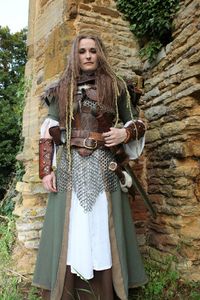
The above images are from Idiom Productions Costume and Props Workshop
Kallavesi and Suaq
Here thick furs and rougher leathers are more commonly worn. The headdresses of Kallavesi warriors are often bulky and protective.
Bibliography and Resources
Further Reading
http://www.3owls.org/sca/costume/saxon.htm
Patterns
- McCall's kirtle pattern
- Historical patterns
- Tunic pattern
- Child dress pattern
- Female tunic and bliaut pattern
Online Shops
- Angrave Designs produces custom orders (including embroidered borders).
- Jorgencraft make beautiful viking costume.
- The Midgard Seamstress Custom made UK LARP and Re-enactment costumes
- Dein LARP Store has a large range of appropriate dresses, trousers and tunics. Note their page has a translate button and they ship to UK.
- LRP Store sell short and long sleeved tunics.
- Custom Costume Company Bespoke designs for re-enactors and roleplayers
- LARP Fashion sells several styles of tunic and some simple trousers and dresses.
- Velvet Glove have several plain tunics.
- Medieval Merchant stock tunics and dresses.
- Chow’s Emporium has tunics.
- LARP Inn has two tunic styles.
- StahlGilde sells tunics.
Armour
- Battle Ready provides quality leather armour
- Evenlode Studios provides quality off-the-peg and custom leather armour.
- Idiom Productions Idiom Productions provides for custom leather orders.
- Totally Leathered Totally Leathered provides custom tooled leatherwork & bespoke armour.
- Darkblade has leather armour (note that some items in the general armour page may be more suitable than those on the specific wintermark page)
Jewellery
- Crafty Celts - Torcs, jewellery, buckles and belts (American company but they will ship to UK).
